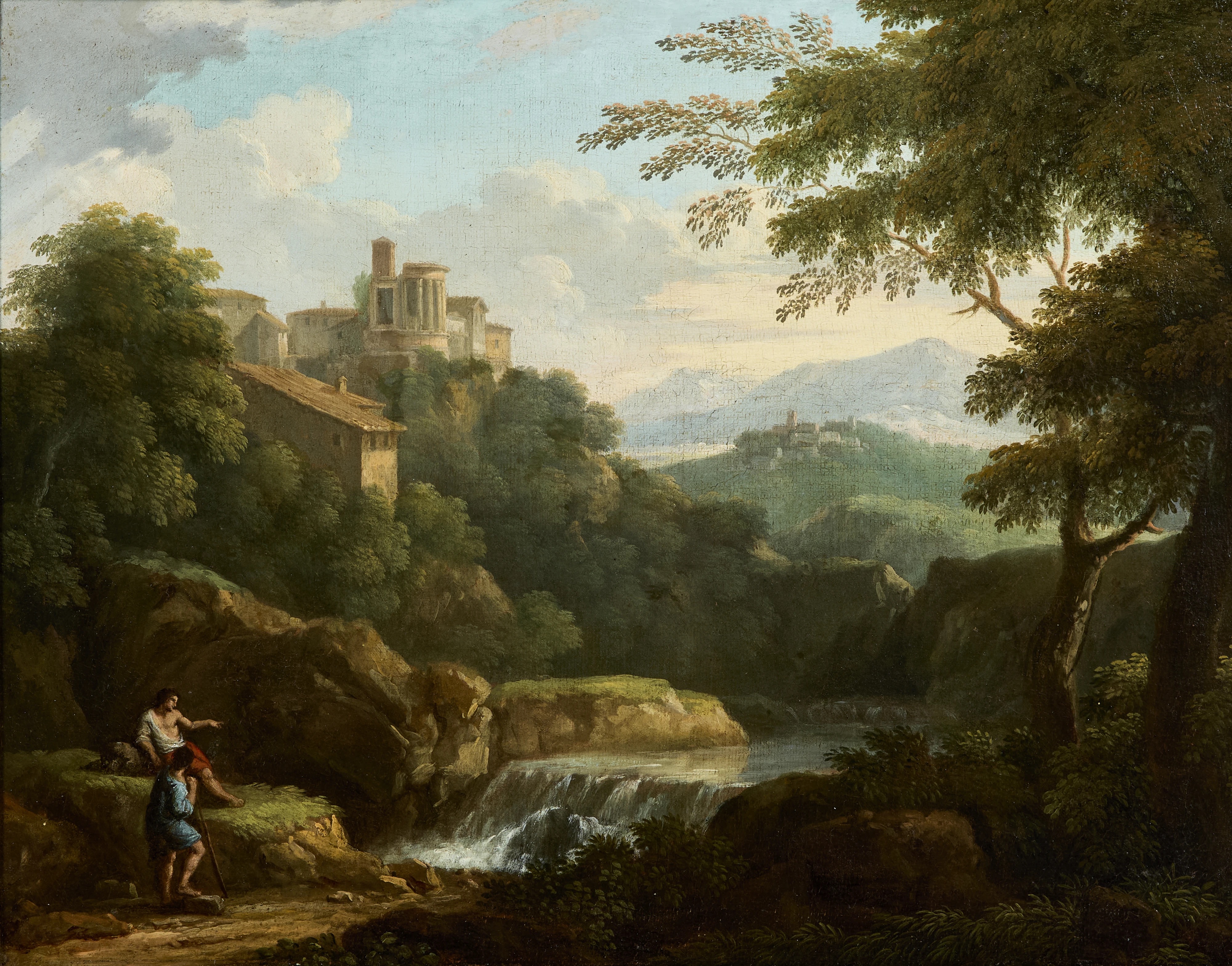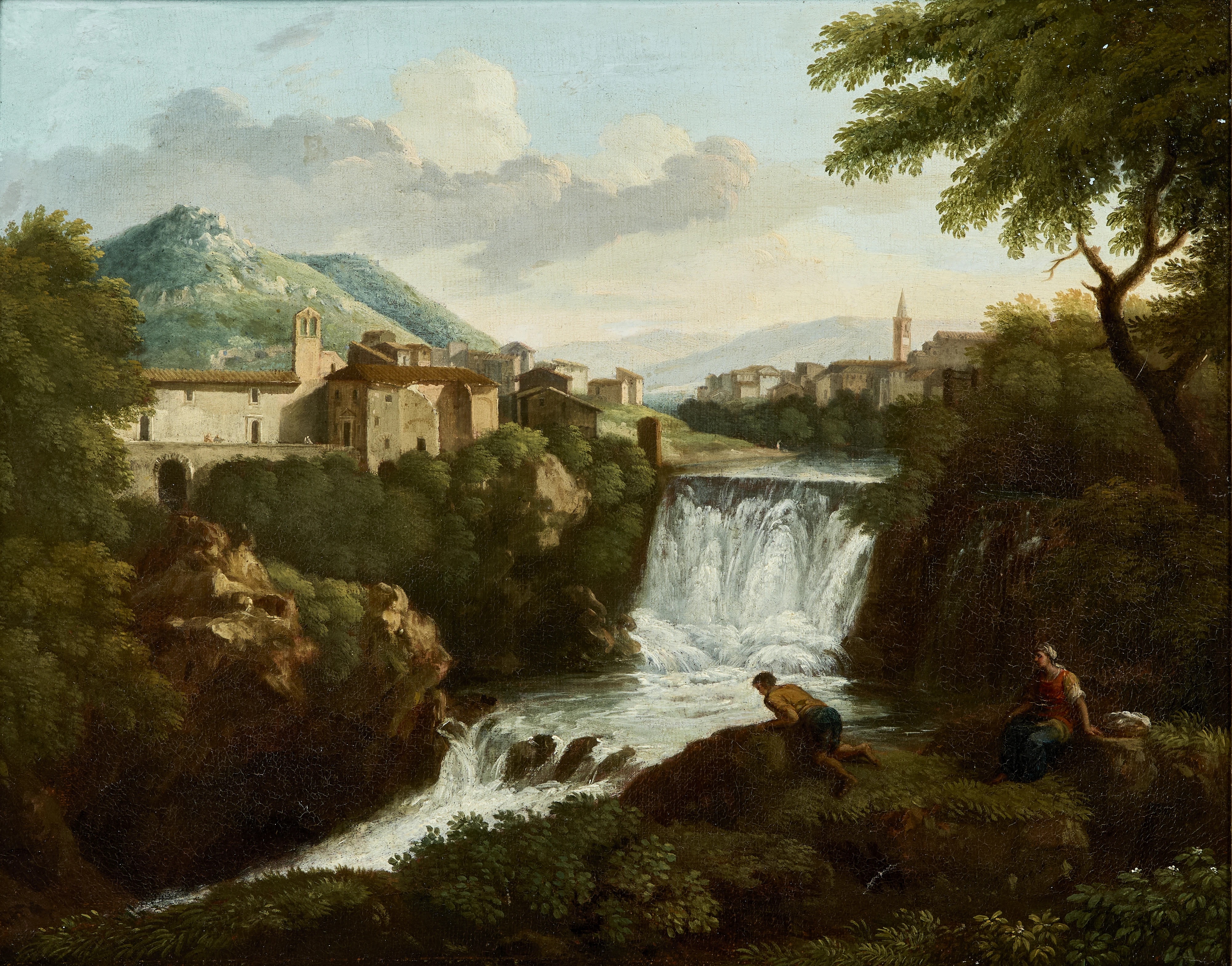Gaspard Dughet (1615–1675), was born in Rome, the son of a French pastry-chef and his Italian wife. He has always generally been considered as a French painter, although in fact he never visited France.

Dughet’s artistic journey began in around 1631 when he became a pupil of the celebrated classical painter Nicolas Poussin, who had married Dughet’s sister Anne five years earlier. Their close relationship extended beyond family ties - Poussin’s influence was formative in Dughet’s development, and Dughet adopted his mentor’s surname, becoming widely known as “Gaspard Poussin.” Following in the footsteps of Poussin and Claude Lorrain, Dughet rose to become one of the most prominent landscape painters in 17th-century Rome.
His style is rooted in the classical discipline of Poussin but he was also influenced by the work of Salvator Rosa, whose romantic and rugged landscapes offered a more dramatic counterpoint to the classical harmony of Poussin’s works.
Dughet’s early biographers noted both his talent and the remarkable speed with which he worked. While he was an accomplished painter in oils, he was equally in demand for large-scale fresco commissions. His output included major decorative cycles, including series depicting views around Rome in the Palazzo Colonna, and collaborative work at the Palazzo Pamphilj in Valmontone with Pier Francesco Mola, Mattia Preti, and Cozza. At the Palazzo Pamphilj, as well as in other works, the figures – or "staffage" – were often painted by others. This practice was not uncommon at the time, and it can be seen in works such as his Landscape with the Union of Dido and Aeneas.

Despite his prolific output – around 400 known works – Dughet’s style changed very little throughout his career, making his paintings challenging to date. However, this consistency also speaks to the strength and clarity of his artistic vision.
Dughet died in Rome on 25 May 1675, but his reputation only grew in the years that followed. During the 18th century, his works became particularly popular with British collectors. His style influenced not only landscape painting but also the design of English gardens.
His students, including Crescenzio Onofri, Jacques de Rooster, and Jan Frans van Bloemen, carried his legacy into the next generation. Today, Dughet’s works are housed in major institutions such as the National Gallery in London, where paintings such as The Sacrifice of Abraham attest to his lasting appeal and artistic significance.
